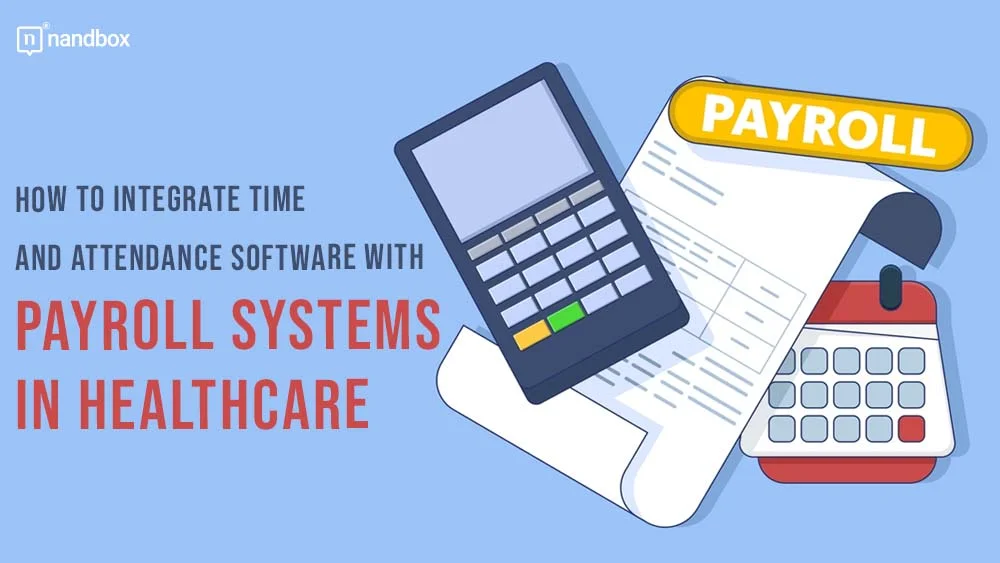Integrating time and attendance software with payroll systems in the healthcare industry can improve employee satisfaction, decrease errors, and streamline operations. Precise time tracking and payroll management are essential in the healthcare sector due to its difficult schedules, multiple shifts, and regulatory requirements. Combining these two systems allows healthcare organizations to automate attendance tracking, accurately calculate wages, and ensure compliance with labor laws.
A smooth integration not only saves time and money but also helps maintain accurate employee records, making the payroll process more efficient. Understanding how to integrate these systems effectively can greatly improve overall productivity and reduce administrative burdens in healthcare settings.
Why Integrate Time and Attendance Software with Payroll Systems?
Integrating time and attendance software with payroll systems provides healthcare organizations with numerous benefits. Manually tracking employee hours and processing payroll can be time-consuming and prone to errors. Integration automates this process, ensuring accurate data transfer and reducing the risk of costly mistakes. Here are some benefits of integration:
- Automates data transfer.
- Reduces manual errors.
- Improves payroll accuracy.
- Enhances compliance with labor laws.
- Streamlines operations.
Integrated time and attendance software automates data transfer, reduces manual errors, improves payroll accuracy, enhances compliance with labor laws, and streamlines operations.
What are the Key Steps to Integrate Time and Attendance Software with Payroll Systems?
Integrating these systems involves several important steps. The process requires careful planning and a clear understanding of the organization’s needs to ensure a smooth transition. Here are the key steps to successfully integrating time and attendance management software.
1. Assess Your Current Systems and Needs
Before starting the integration, it’s important to assess your existing time and attendance and payroll systems. Identify issues such as data inaccuracies, manual entry errors, and compliance gaps that need to be addressed. Here are some key areas to focus on during your assessment:
- System compatibility.
- Current workflow challenges.
- Key functionalities needed.
- Compliance requirements.
- Integration goals.
Evaluating your current setup helps identify the gaps and challenges that integration needs to solve. This step ensures that the new system will improve accuracy, reduce manual tasks, and align with the operational demands of your healthcare facility.
2. Choose the Right Software
Choosing the right time and attendance software that seamlessly integrates well with existing payroll management system. Utilizing specialized healthcare time and attendance software solutions can further simplify the process and provide valuable insights into workforce management. Focus on solutions designed to handle healthcare-specific needs, such as tracking varied shift patterns, managing multiple employee roles, and complying with healthcare regulations. Here are the features you should consider when selecting the software:
- Seamless integration capabilities.
- Support for complex shift patterns.
- Compliance with healthcare regulations.
- User-friendly interface.
- Customization options.
Selecting the right software ensures smoother operations, improves employee satisfaction, and minimizes compliance risks.
3. Ensure Compatibility and Integration Capabilities
Not every time attendance software integrates well with existing payroll management system. Ensuring compatibility is vital, as seamless data communication between systems is a cornerstone of successful integration. Look for software that offers APIs or pre-built integrations to facilitate smooth data exchange, real-time updates, and secure data handling. Here’s a checklist to guide you through compatibility considerations:
- API availability.
- Pre-built integrations.
- Data synchronization capabilities.
- Real-time updates.
- Security features.
Ensuring compatibility between systems helps prevent data transfer issues, improves payroll accuracy, and enhances overall system performance.
4. Test the Integration Thoroughly
Thorough testing is essential for a successful integration. Conduct a pilot test with a small group of employees to validate that time and attendance data accurately flows into the payroll system. Here are key areas to focus on during testing:
- Accuracy of time data transfer.
- Correctness of payroll calculations.
- System performance under load.
- Error handling and notifications.
- User Feedback.
Testing ensures the integrated system functions as expected, allowing you to address any errors before full-scale deployment. A well-tested integration boosts confidence in the new system and ensures smooth operations without disrupting payroll processes.
How Can You Overcome the Challenges When Integrating?
Integrating time and attendance software with payroll systems in healthcare can offer numerous benefits, but the process often comes with challenges. Common hurdles include system compatibility issues and employee resistance. Addressing these obstacles proactively is important for a successful and seamless integration.
- Data compatibility issues.
- System compatibility.
- Employee resistance.
- New software integration.
- Software vendors.
- Inaccuracies.
Managing these challenges requires working closely with software vendors to resolve compatibility issues and providing adequate training to reduce employee resistance. Understanding these potential hurdles helps ensure a smoother transition to an integrated system that enhances overall efficiency.
What Best Practices Should Be Adopted for Successful Integration?
Successfully integrating time and attendance software with payroll systems in healthcare goes beyond selecting the right tools; implementing best practices is essential for a smooth integration process. Comprehensive staff training ensures employees know how to clock in, report discrepancies, and access payroll information, reducing errors and boosting user adoption.
Continuous monitoring of system performance helps identify and resolve issues with data transfer and payroll discrepancies. Regular optimization, based on feedback and performance reports, enhances the accuracy, efficiency, and long-term success of the integrated system.
FAQs
What are the benefits of integrating time and attendance software with payroll systems in healthcare?
Integrating time and attendance software with payroll systems streamlines operations reduces errors and improves compliance.
How can healthcare time and attendance software help with compliance?
Healthcare time and attendance software ensures compliance by accurately tracking hours worked, managing overtime, and keeping records that meet labor laws and healthcare regulations.
Conclusion
Integrating time and attendance software with payroll systems in healthcare is a powerful way to streamline processes, reduce errors, and enhance overall efficiency. By carefully selecting compatible software, thoroughly testing the integration, and following best practices, healthcare organizations can ensure a smooth and successful transition. The nandbox App Builder provides a seamless solution for integrating time and attendance tracking with payroll systems in healthcare, enabling efficient workforce management. For healthcare organizations that operate around the clock, such integration is essential for managing shift differentials, overtime, and compliance with labor laws, which directly impact the bottom line.




